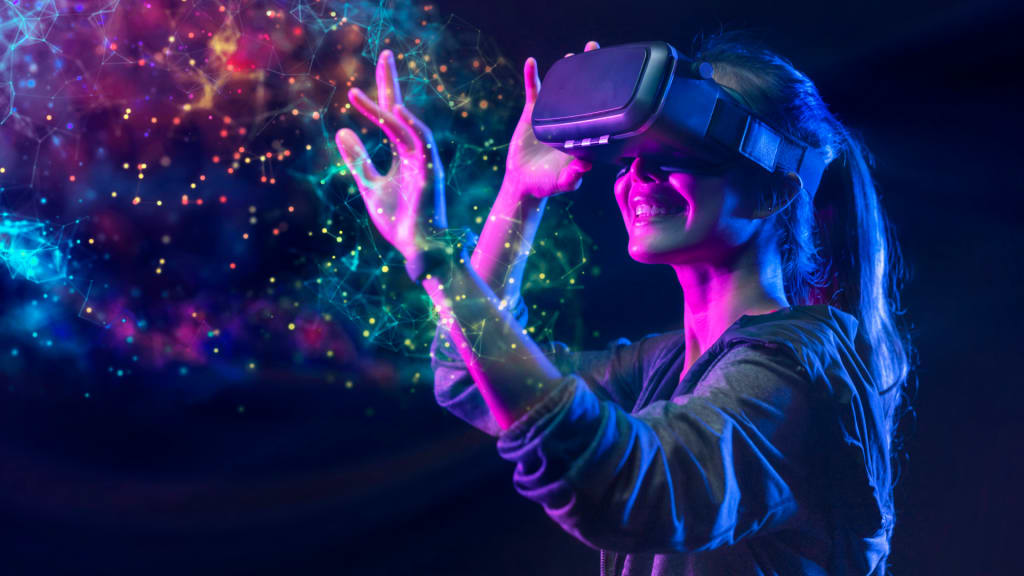
Virtual reality (VR) technology has come a long way since its inception. Let's explore the journey of virtual reality from its beginnings to its potential future.
1. Early Developments:
In the 1960s, early prototypes of VR emerged. Ivan Sutherland's "Sword of Damocles" in 1968 is considered the first head-mounted display (HMD), although it was large and impractical. In the following decades, researchers and pioneers continued to explore VR concepts and technologies.
2. Commercialization:
In the 1990s, VR gained attention in the gaming and entertainment industry. Companies like Sega and Nintendo introduced VR devices, but the technology was limited by low-resolution displays, expensive hardware, and a lack of immersive experiences.
3. Modern VR:
The modern VR era began in 2010 when Palmer Luckey created the Oculus Rift prototype, which offered a high-quality immersive experience at an affordable price. In 2012, a successful Kickstarter campaign led to Oculus VR's founding, eventually leading to the release of consumer-grade VR headsets like the Oculus Rift and HTC Vive in 2016.
4. Expansion and Applications:
VR technology found applications beyond gaming and entertainment. It began to be used in fields such as healthcare, architecture, education, military training, and more. VR provides realistic simulations, training scenarios, and immersive experiences that enhance various industries.
5. Improvements in Hardware:
VR hardware has witnessed significant advancements. Higher-resolution displays, improved tracking systems, and motion controllers have enhanced immersion and reduced motion sickness. Wireless and standalone VR headsets, such as the Oculus Quest series, have increased accessibility and ease of use.
6. Augmented Reality (AR) and Mixed Reality (MR):
Alongside VR, AR and MR have emerged as related technologies. AR overlays virtual elements onto the real world, while MR combines virtual and real-world environments. Products like Microsoft's HoloLens and mobile AR applications have gained popularity, expanding the possibilities of immersive experiences.
7. Future Possibilities:
The future of VR holds exciting prospects. Here are a few potential developments:
- Improved Resolution and FOV: Higher-resolution displays with wider fields of view will enhance visual fidelity and immersion.
- Haptic Feedback: Advancements in haptic technology will enable more realistic touch and tactile sensations within virtual environments.
- Eye-tracking and Foveated Rendering: Eye-tracking technology can optimize rendering by focusing processing power on the user's field of view, reducing hardware requirements.
- Brain-Computer Interfaces (BCIs): Direct neural interfaces could enable users to control VR experiences with their thoughts, leading to more intuitive interactions.
- Social VR: The integration of VR with social platforms could facilitate shared experiences, collaboration, and communication within virtual spaces.
Virtual Reality (VR) has emerged as a transformative technology, revolutionizing the way we experience and interact with digital content. By immersing users in simulated environments, VR has the potential to reshape various industries, including gaming, education, healthcare, and business. This article explores the rapid rise of VR, its applications, and the profound impact it has had on these sectors.
1. Gaming and Entertainment
One of the primary drivers behind the rise of VR has been its integration into the gaming industry. VR gaming offers a level of immersion and interactivity unmatched by traditional gaming platforms. Players can now step into virtual worlds, explore fantasy landscapes, and engage in intense gameplay, creating an unprecedented level of realism. The success of VR gaming has spurred the development of dedicated VR headsets, accessories, and a growing ecosystem of VR game developers.
2. Education and Training
Virtual Reality has found its way into the education sector, transforming the way students learn and acquire new skills. Immersive VR experiences allow learners to explore historical sites, dive into realistic simulations, and engage in interactive lessons. This technology provides hands-on training opportunities that were previously limited or impossible, such as medical procedures, pilot training, and hazardous industrial environments. VR-based training programs enhance knowledge retention and improve learning outcomes.
3. Healthcare and Therapy
Virtual Reality has made significant inroads into healthcare, offering innovative solutions for diagnosis, treatment, and therapy. Surgeons can now practice complex procedures in a realistic virtual environment, reducing the risk to patients. VR-based therapies have shown promise in treating conditions like phobias, post-traumatic stress disorder (PTSD), and chronic pain. Moreover, VR experiences can help patients cope with anxiety and improve their overall well-being, offering a distraction from the hospital environment.
4. Business and Collaboration
Virtual Reality has opened up new possibilities for businesses, enabling remote collaboration, virtual meetings, and immersive product demonstrations. With VR, teams from different locations can come together in a shared virtual space, enhancing communication and collaboration. Companies can also showcase their products and prototypes in virtual showrooms, reducing the need for physical prototypes and expensive logistics.
5. Challenges and Future Developments
Despite its rapid growth, VR still faces challenges that need to be addressed. The cost of high-quality VR equipment remains a barrier to widespread adoption, limiting access to the technology. Additionally, motion sickness and the need for improved haptic feedback are areas that require further advancements.
Looking ahead, the future of VR appears promising. Continued technological advancements, including improvements in display resolution, wireless capabilities, and haptic feedback, will enhance the immersive experience. Moreover, the integration of VR with other emerging technologies like artificial intelligence and augmented reality will lead to even more compelling and seamless experiences.
The rise of Virtual Reality has transformed numerous industries, enhancing gaming experiences, revolutionizing education, improving healthcare outcomes, and enabling new forms of collaboration in business. With continued advancements and decreasing costs, VR is poised to become increasingly accessible to a wider audience, unlocking new realms of possibilities and reshaping the way we live, learn, and interact with the digital world.
About the Creator
Enjoyed the story? Support the Creator.
Subscribe for free to receive all their stories in your feed. You could also pledge your support or give them a one-off tip, letting them know you appreciate their work.





Comments
There are no comments for this story
Be the first to respond and start the conversation.